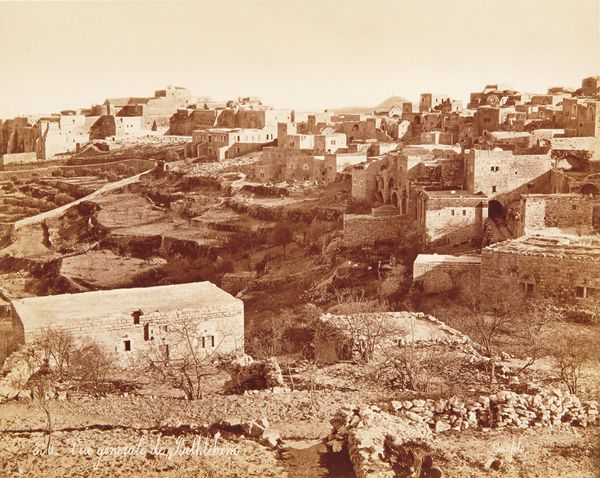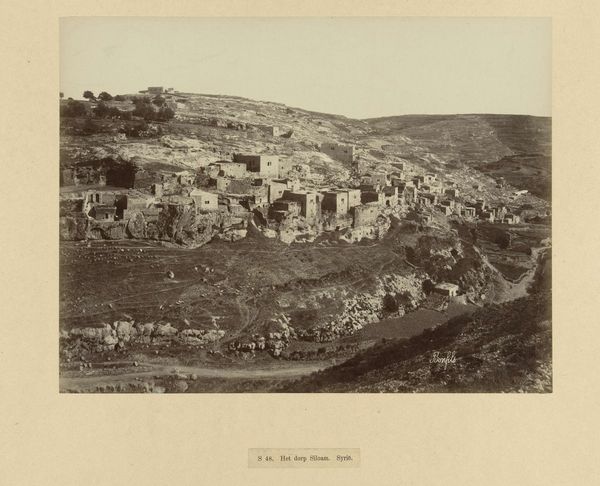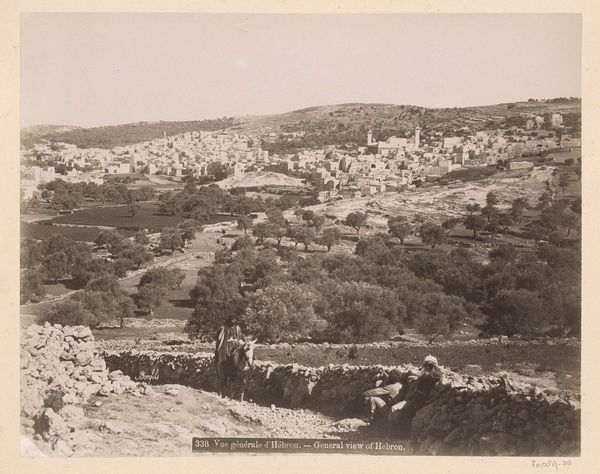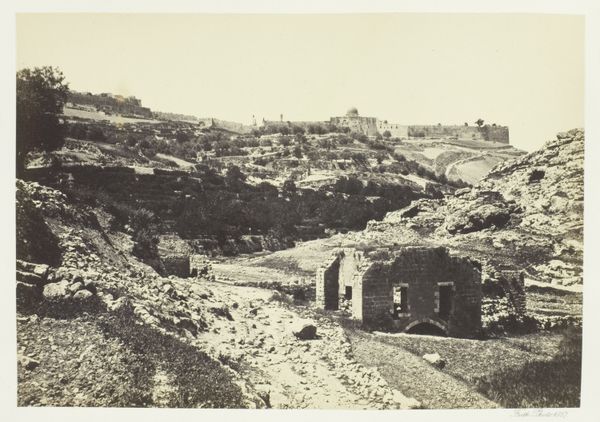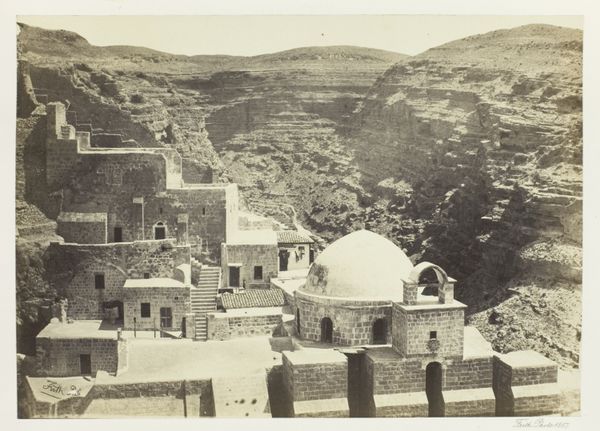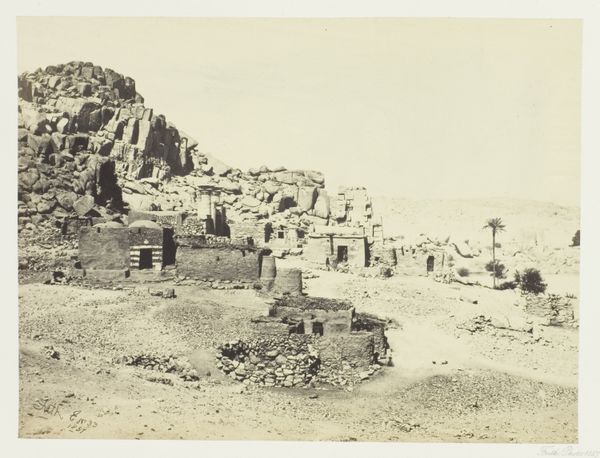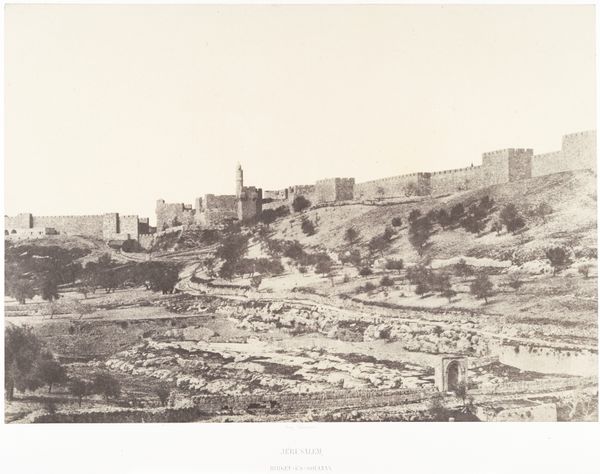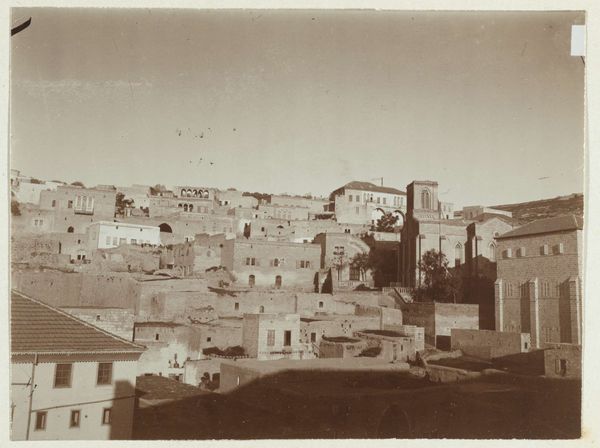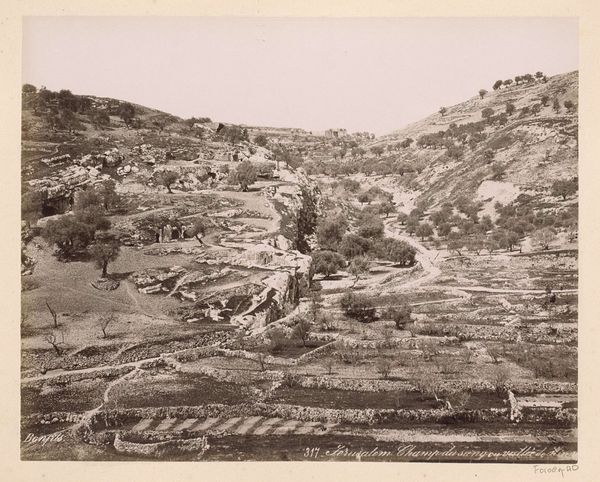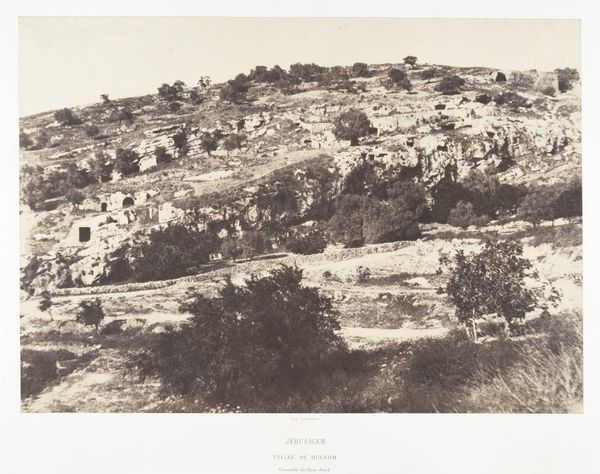
print, photography, albumen-print, architecture
# print
#
landscape
#
photography
#
arch
#
orientalism
#
cityscape
#
islamic-art
#
albumen-print
#
architecture
Dimensions: Image: 22.6 x 27.6 cm (8 7/8 x 10 7/8 in.) Mount: 44.6 x 60.3 cm (17 9/16 x 23 3/4 in.)
Copyright: Public Domain
Editor: This is Auguste Salzmann's "Jérusalem, Beit-Lehem, Vue générale," taken between 1854 and 1859, an albumen print capturing a sprawling cityscape. It's stark and captivating. What historical and cultural narratives are embedded in this image for you? Curator: Well, immediately, this photograph offers us a crucial lens through which to examine 19th-century Orientalism and its impact on the Western perception of the Middle East. Salzmann was commissioned to document the Holy Land. Consider who commissioned him and why. Were these images intended to objectively document or reinforce colonial power dynamics and religious narratives? Editor: That's fascinating. So, you're suggesting it’s not just a straightforward landscape, but a document shaped by a specific agenda? Curator: Precisely. Look at the composition: the way the town is presented. Does it romanticize the region, exoticize it, or present it as ‘other’? Think about the power relations inherent in who gets to represent whom, especially in the context of religious and political tensions that were, and still are, at play. What stories are not being told in this carefully constructed image? Editor: I see your point. The image seems to emphasize the foreignness of the place...almost a biblical feeling. It lacks any contemporary local perspective. Curator: And that deliberate omission is telling, isn't it? Early photography played a vital role in shaping global perceptions and in defining what was considered culturally valuable. So, by studying these images, we can critique how power, representation, and knowledge intersect. It challenges us to be critical viewers and deconstruct those potentially harmful representations. Editor: I never would have considered the act of taking the photograph as having political implications. Now, I see how much the context influences its reading. Thanks for showing me that. Curator: My pleasure. It's by questioning these "neutral" depictions that we can begin to address representation gaps.
Comments
No comments
Be the first to comment and join the conversation on the ultimate creative platform.
